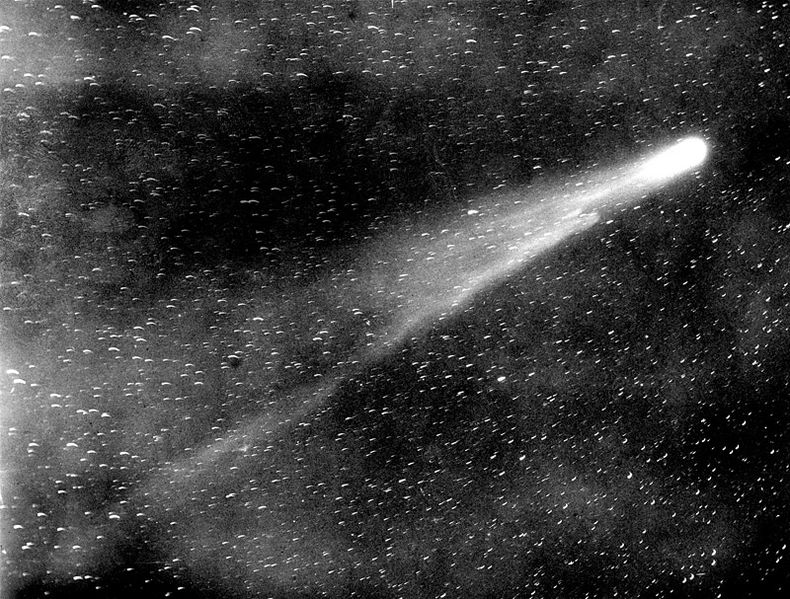
In 467/6 BC, Greece was hit - literally - by an historic celestial event. According to ancient accounts, a meteorite the size of a "wagon-load" fell near Aegospotami in northern Greece. Plutarch later wrote that for 75 days before the stone fell, a huge fiery body was visible in the sky, "like an inflamed cloud, not still but moving with complex and branching motions, so that fiery fragments from its shaking and errant course flew in every direction, flashing like shooting stars".
Once the stone had fallen, the local inhabitants got over their fright and gathered around the crater. Peering in, "they saw no activity of fire, not even a trace, but a rock lying there, large indeed, but representing no appreciable fraction of that fiery mass above." The meteorite became a tourist attraction for the next 500 years.
This is exactly the kind of event that might normally have been subject to some mythological or religious explanation. But surprisingly, the impact was subsequently described in purely scientific terms. This seems to have been due to a young astronomer called Anaxagoras, who had supposedly used his theories to predict the meteorite's fall.
There are a few strange things about this story. First, what was the fiery body? The meteor itself would not have been visible in the sky for 75 days. And second, meteorite impacts are essentially random events, so how could Anaxagoras have predicted it?
Both issues are cleared up in a recent paper by philosopher Dan Graham and astronomer Eric Hintz of Brigham Young University in Provo, Utah (Journal of Cosmology, vol 9, p 3030).
It has been suggested before that the account of the fiery body is a perfect description of a comet. But Graham and Hintz go further than this, identifying this observation as the earliest documented sighting of Halley's comet.
Halley is unique among bright comets for making frequent returns to Earth's neighbourhood - roughly every 75 years or so. Many of its ancient visits are known from the detailed records of Babylonian and Chinese astronomers, with the earliest documented sighting having been made by the Chinese in 240 BC.
Graham and Hintz knew that 467/6 BC corresponded roughly with an expected pass of Halley's comet so they modelled the exact path that the comet would have taken, and compared it to all of the details they could find in ancient accounts, for example that the object was in the western sky when the meteorite fell, and was surrounded by shooting stars.
As I've written in a news story in this week's New Scientist, they showed that the ancient descriptions are indeed compatible with a sighting of Halley. The comet would have been visible for a maximum of 82 days between 4 June and 25 August 466 BC. It was in the western sky from 18 July onwards. Around this time, the Earth was moving under the comet's tail, so its debris field would have generated shooting stars.
Unlike the detailed Babylonian and Chinese records, the Greek stories don't give an exact date or any precise information about the location of the comet in the sky. So it isn't possible to say for sure that the fiery object that accompanied the meteorite's fall was Halley. But Graham says it must be a "strong contender". Such bright comets are rare, so it would have been quite a coincidence if there was another one in the sky at around the same time (though not impossible - a brilliant daylight comet appeared just three months before the long-awaited return of Halley's comet in 1910).
On to the second part of the mystery - how did Anaxagoras predict the meteorite's fall? Graham says that despite suggestions that the astronomer predicted this particular meteorite, it's much more likely that he predicted the general possibility that a rock might fall from the sky. According to Plutarch: "it is said that Anaxagoras predicted that one of the bodies entangled in the heaven might, if there were some slip or agitation, break off and fall or be cast down."
Although that sounds rather less impressive, Graham says it was actually a revolutionary idea. He is writing a book about Anaxagoras, and says that he deserves to be recognised as "the star of early Greek astronomy".
Before Anaxagoras's time, celestial bodies such as the Moon and planets were thought to be fiery, lighter-than-air objects. But Anaxagoras, after observing a solar eclipse in 478 BC, worked out that they were actually heavy, rocky objects, held aloft by a centrifugal force. He warned that such rocks might one day fall to Earth, and when the Aegospotami meteorite crashed into the ground, he was dramatically proved right. "From then on, all of the other theories disappeared," says Graham.
That leaves just one question - was there any causal connection between the comet and the meteorite? Graham says it's impossible to know for sure; the appearance of both at the same time could have been a coincidence. On the other hand, the comet might have nudged a near-Earth asteroid from its course and sent it hurtling towards northern Greece. Either way, the Greeks' view of the cosmos was changed forever.